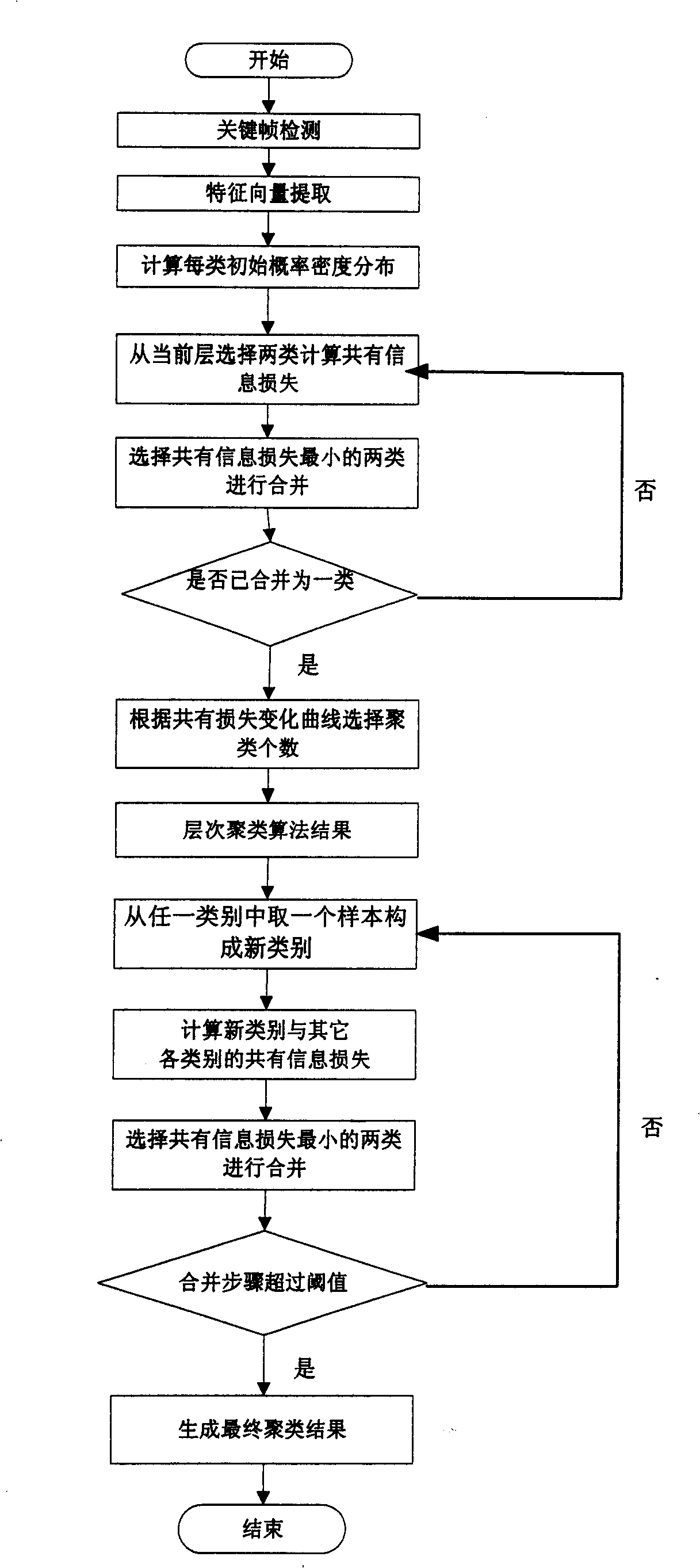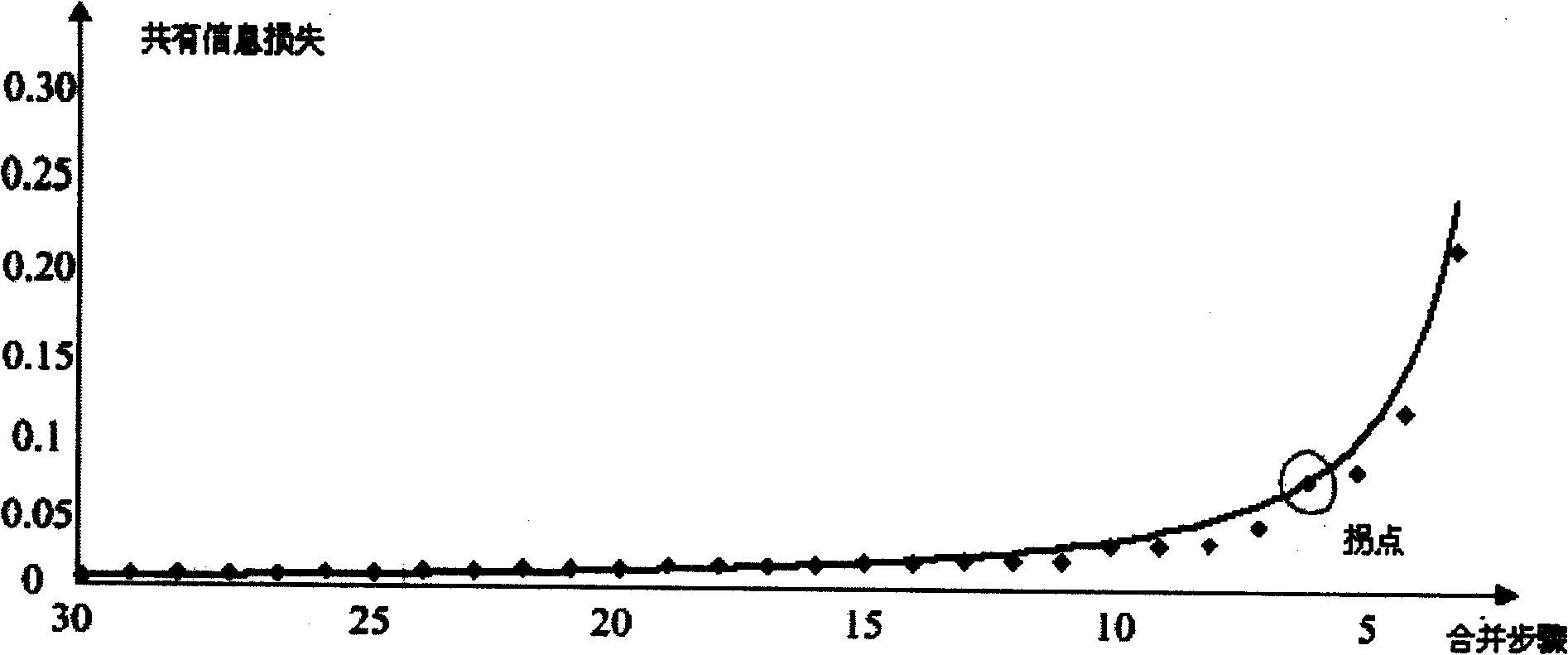Lens clustering method based on information bottleneck theory
An information bottleneck and clustering method technology, which is applied in the field of clustering shots, can solve problems such as the increase of shared information loss, local optimal solutions, and the increase of shared information loss, so as to improve the precision rate and recall rate, The effect of avoiding local optimal solution problems
- Summary
- Abstract
- Description
- Claims
- Application Information
AI Technical Summary
Problems solved by technology
Method used
Image
Examples
Embodiment Construction
[0025] Such as figure 1 Shown, the present invention specifically comprises the following steps:
[0026] 1. Feature vector extraction
[0027] The video frame in the middle of the shot is selected as the key frame, and the feature vector is extracted. The present invention extracts the color autocorrelation diagram of the key frame, the color moment feature and the Gabor texture feature of the shot time slice image. Among them, the Gabor texture feature of the time slice image reflects the motion feature of the lens.
[0028] (1) Color autocorrelation diagram
[0029] Color feature is one of the underlying features that is most likely to cause human perception, and the color distribution reflects the appearance, appearance, and spatial relationship of certain types of objects. Moreover, compared with other low-level features, color feature extraction is more efficient and easier to operate and process. Compared with the color histogram, the color autocorrelation map refl...
PUM
 Login to View More
Login to View More Abstract
Description
Claims
Application Information
 Login to View More
Login to View More - R&D
- Intellectual Property
- Life Sciences
- Materials
- Tech Scout
- Unparalleled Data Quality
- Higher Quality Content
- 60% Fewer Hallucinations
Browse by: Latest US Patents, China's latest patents, Technical Efficacy Thesaurus, Application Domain, Technology Topic, Popular Technical Reports.
© 2025 PatSnap. All rights reserved.Legal|Privacy policy|Modern Slavery Act Transparency Statement|Sitemap|About US| Contact US: help@patsnap.com



